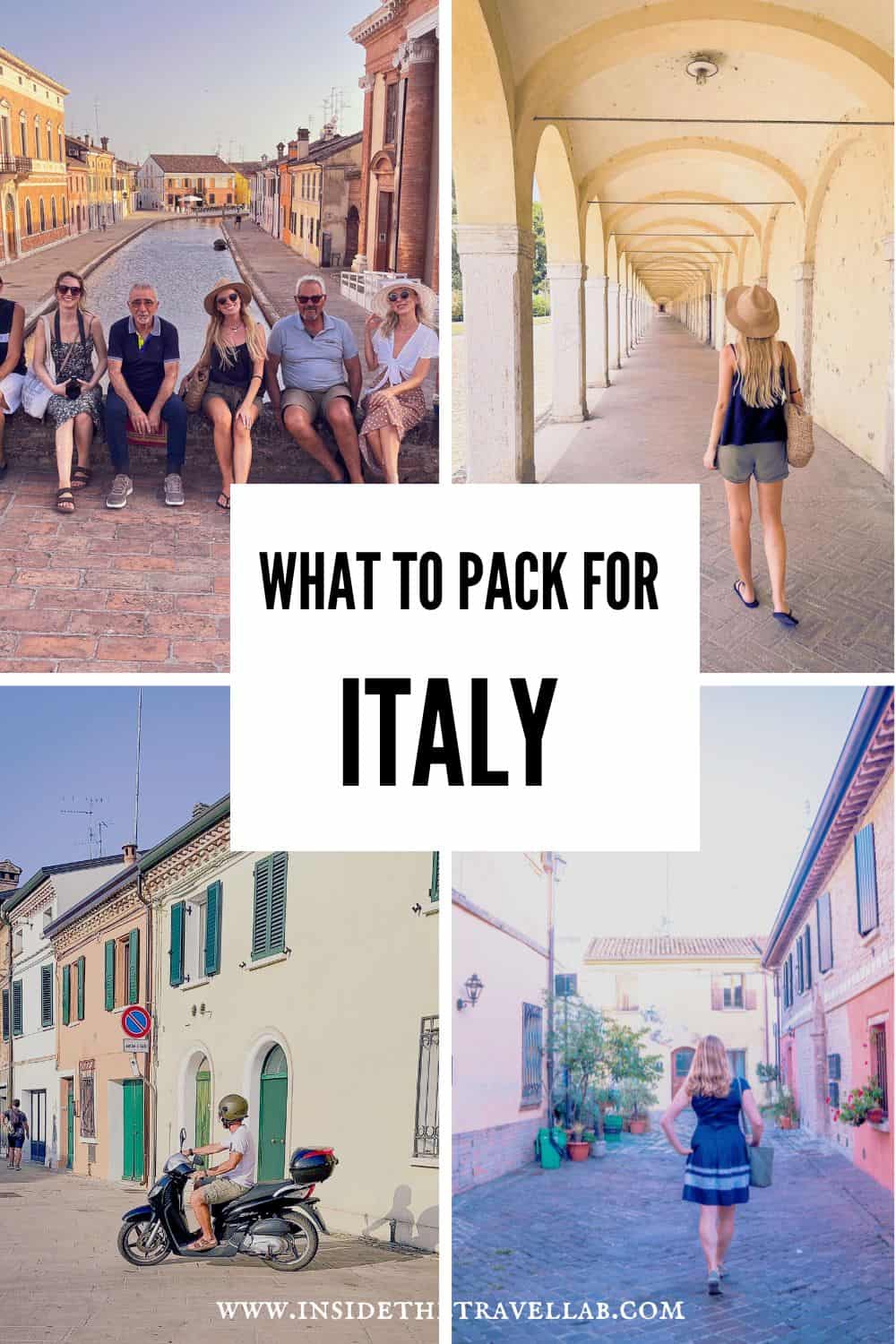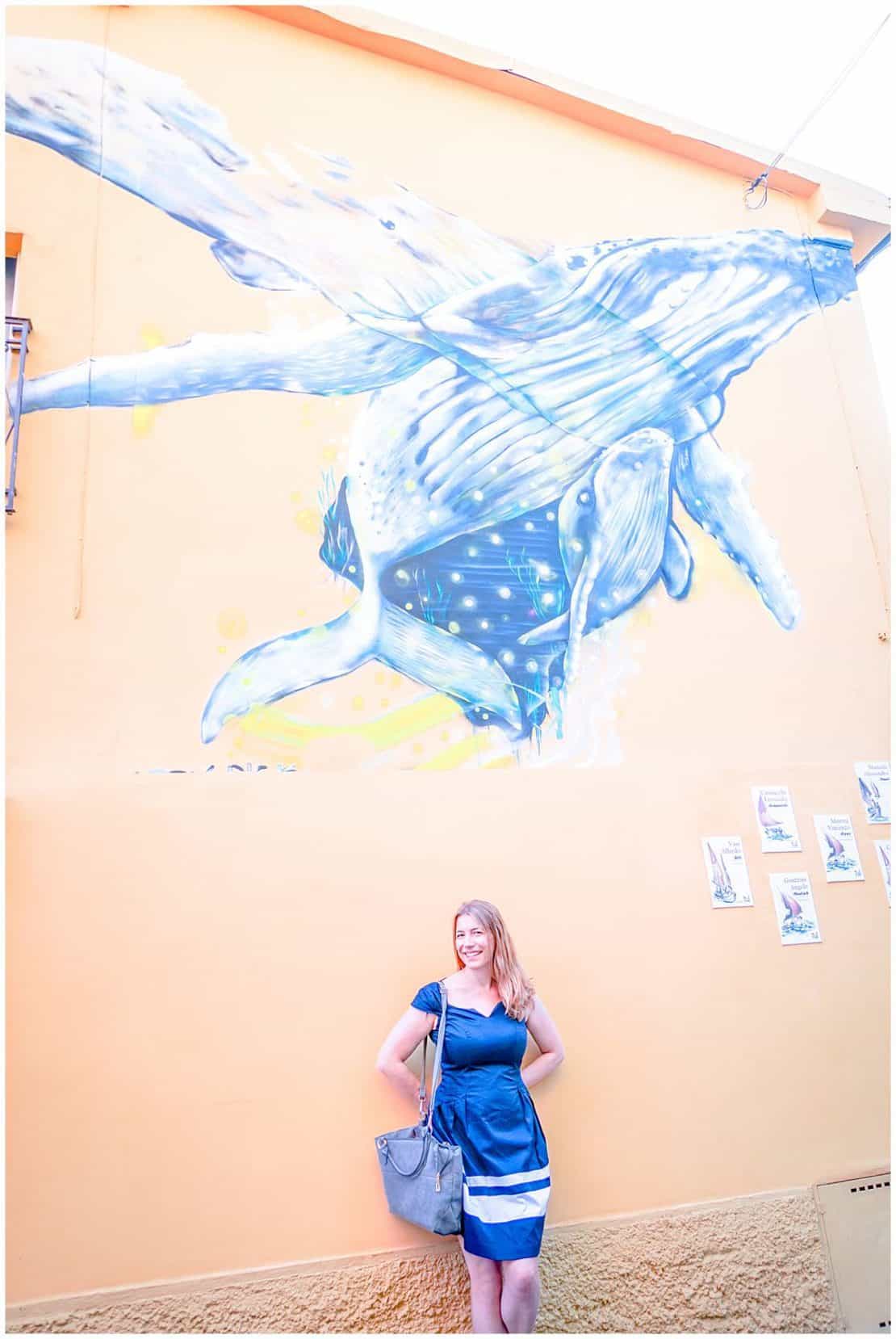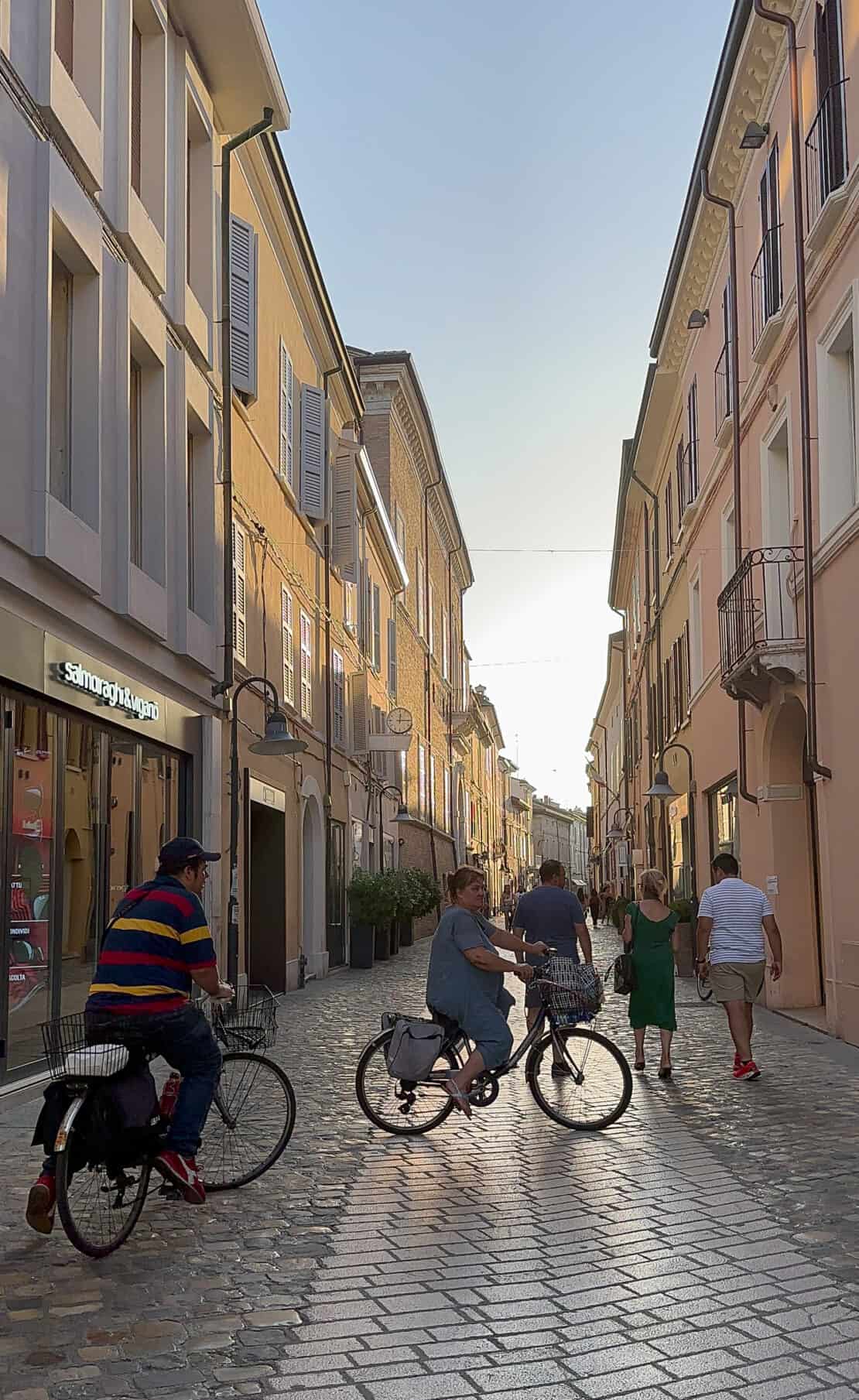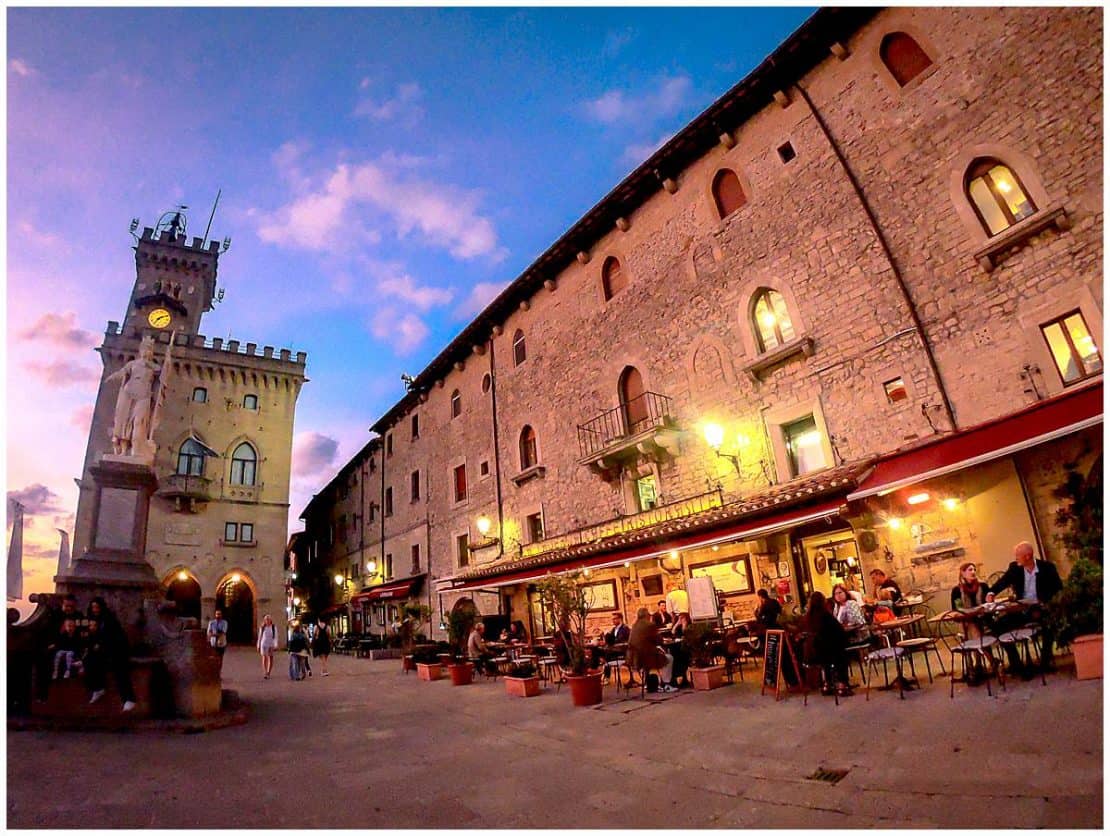Wondering what to pack for Italy? Here’s what you need to know.
Deciding what to pack for Italy can be difficult. With such a variety of experiences available – exploring ancient ruins, climbing rugged mountain trails, or lounging on sun-drenched beaches – sometimes, it’s difficult to know where to start.
That’s why we’ve created this comprehensive guide to help you pack smart for Italy, no matter the season. From city chic to countryside comfort, we’ll cover what to wear and what essentials to bring, all while keeping sustainability and thoughtful travel in mind.
Let’s dive into the must-have items that will prepare you for an unforgettable Italian adventure.

What to Pack for Italy: Understanding the Climate
Depending on the time of year and the region you’re visiting, Italy’s weather can swing from sun-drenched beaches in southern Italy to snow-capped peaks in the north. This diversity makes packing smart even more essential.
Whether you’re sipping espresso in a Milan café or hiking through the rolling hills of Tuscany, understanding Italy’s seasonal weather patterns will help you pack with confidence.
Need more advice? Check out our complete holiday packing guide with printable PDF.
Spring (March-May)
Spring in Italy is a beautiful time, with flowers in bloom and mild, comfortable weather. However, the weather can be unpredictable, with cool mornings and warmer afternoons. Light layers are your best friend – think breathable shirts, sweaters, and a versatile jacket that can handle a slight chill. Comfortable walking shoes are also a must, as this is the perfect season for exploring Italy’s cities and countryside.
- Recommended reading: what to pack for a walking holiday
What to Pack:
- Light sweater or cardigan for cooler evenings.
- A mid-weight jacket (waterproof options for occasional rain showers).
- Comfortable walking shoes for sightseeing.
- Sunglasses and a light scarf for breezy days.

Summer (June-August)
Summers in Italy can be scorching, especially in the south. Think lightweight fabrics, breathable clothing, and plenty of sun protection. If you’re visiting cities like Rome or Florence, expect high temperatures and pack accordingly. For coastal areas like the Amalfi Coast or Cinque Terre, you’ll need swimwear and beach essentials.
What to Pack:
- Lightweight, breathable fabrics like cotton or linen.
- A wide-brimmed hat and sunglasses for sun protection.
- Comfortable sandals or walking shoes (preferably breathable).
- Swimwear for beach destinations.
- Reusable water bottle to stay hydrated during hot days.
Autumn (September-November)
Autumn in Italy is a fantastic time to visit, with cooler temperatures and fewer crowds. It’s also one of the most beautiful seasons, with golden hues covering the countryside. You’ll want to pack versatile clothing that can handle cool mornings and warmer afternoons. This is also harvest season in many regions, perfect for vineyard tours and outdoor activities.
What to Pack:
- A light jacket or trench coat.
- Layered outfits: t-shirts, long-sleeve shirts, and sweaters.
- Comfortable walking shoes for exploring towns and nature.
- A scarf for added warmth and style.

Winter (December-February)
Winter in Italy varies greatly depending on where you are. The north can be cold, with snow in the Alps and chilly temperatures in cities like Milan. However, southern regions like Sicily remain milder. If you’re visiting Italy in winter, be prepared for the cold, especially if you plan to enjoy the country’s renowned Christmas markets or ski resorts. You can find our ultimate ski holiday packing list here.
What to Pack:
- A warm coat and scarf.
- Waterproof shoes or boots for wet or snowy conditions.
- Layered clothing to stay warm while sightseeing.
- Gloves, hat, and thermal socks for the colder regions.
Keep in mind that temperatures can fluctuate between regions, so packing layers and versatile items is key to staying comfortable.

Dress Codes for Italy
Italy is synonymous with style and it’s important to pack both for comfort and fashion.
Italians take pride in their appearance, especially in cities, so packing versatile yet stylish outfits will help you blend in, while also being practical for long days of exploration. From walking tours to fine dining, this guide will help you pack the perfect wardrobe for your Italian adventure.
City Style: Chic and Comfortable
When exploring Italy’s iconic cities – Milan, Rome, Florence – fashion is important. You’ll want to look stylish but also comfortable enough for hours of walking on cobbled streets. Italians appreciate polished, minimalist looks, so pack simple, well-tailored pieces that you can easily mix and match. For travel tips, see our guides to unusual things to do in Rome and the best things to do in Chiavenna near Milan.
What to Pack:
- Comfortable walking shoes: Opt for stylish flats, loafers, or low-heeled boots. Avoid overly sporty trainers if you want to blend in with the locals.
- Smart casual outfits: Lightweight dresses, tailored trousers, or chic skirts are perfect for both sightseeing and dining out.
- A neutral blazer or jacket: This will instantly elevate your look and keep you warm in cooler evenings.
- A stylish crossbody bag: Choose a secure yet fashionable bag for carrying your essentials while exploring.
Countryside Comfort: Relaxed and Practical
If you’re heading to Italy’s countryside, whether it’s for vineyard tours in Tuscany or hiking in the Dolomites, the emphasis should be on comfort and practicality. However, this doesn’t mean sacrificing style – Italy’s rural areas are perfect for laid-back, effortless outfits.
Need travel recommendations? Don’t miss our guide to Tuscany’s best hidden gems.
What to Pack:
- Comfortable walking shoes or hiking boots: Ideal for rural explorations, vineyard walks, and light hikes.
- Breathable fabrics: Linen trousers, lightweight jeans, and casual dresses will keep you cool while looking put together.
- Layering essentials: Pack jumpers or light jackets for cool mornings and evenings.
- Sunhat and sunglasses: The Italian countryside can be hot, so protect yourself from the sun while maintaining a chic look.
Beach Getaways: Embrace La Dolce Vita
If you’re planning a trip to Italy’s stunning coastal areas, such as the Amalfi Coast, Sicily, or Sardinia, you’ll want to pack light, breezy outfits that are perfect for both lounging by the sea and exploring charming seaside towns.
What to Pack:
- Swimwear: Don’t forget to bring more than one set, especially if you plan on swimming daily. Opt for stylish swimwear that can double as a beach outfit.
- Cover-ups and sundresses: A light, easy-to-throw-on dress will take you from beach to bar seamlessly.
- Sandals: Pack both casual flip-flops for the beach and chic sandals for strolling through seaside villages.
- Beach bag: A large, stylish tote that can carry your essentials – a towel, sunscreen, and a good book.
Cultural Sensitivity: Dressing for Religious Sites
Italy is home to some of the world’s most beautiful churches and religious sites, including St Peter’s Basilica and the Basilica Papale di Santa Maria Maggiore. When visiting these places, it’s essential to dress modestly out of respect. Many churches have dress codes requiring covered shoulders and knees, so be prepared with appropriate attire.
What to Pack:
- A shawl or scarf: This is a must-have for covering shoulders when entering churches. It’s lightweight and can easily be carried in your day bag.
- Longer skirts or trousers: Opt for breathable fabrics in summer that still offer coverage.
- Conservative tops: Avoid sleeveless or low-cut shirts, especially in sacred spaces.

Footwear for Italy’s Cobbled Streets
Regardless of where you go in Italy, comfortable footwear is key. Many Italian streets are paved with uneven cobblestones, which can be tough on your feet if you’re not prepared. Opt for shoes that combine style and practicality.
What to Pack:
- Supportive shoes: Look for shoes with cushioning, arch support, and sturdy soles.
- Avoid high heels: While Italians love fashion, high heels can be impractical on cobblestones. Instead, opt for wedges or low block heels if you need extra height.
Mix-and-Match Outfits for Versatility
To keep your luggage light, pack versatile pieces that can be mixed and matched throughout your trip. A well-curated capsule wardrobe can save space while ensuring you’re prepared for any occasion Italy throws your way.
What to Pack:
- Neutral colours: Pack a variety of neutral-coloured tops, bottoms, and outerwear that can easily be combined.
- One or two statement pieces: A colourful scarf or bold accessory can add flair without taking up too much space.
- Day-to-night transition outfits: Choose clothing that can be dressed up with accessories for evenings out, such as a simple dress or tailored trousers with a blouse.
Travel Essentials and Accessories
Beyond clothing, packing the right accessories and travel essentials can make your Italian adventure smoother and more enjoyable.
Day Bag: Lightweight and Secure
A good day bag is essential for carrying everything you’ll need while sightseeing. Choose a stylish, lightweight option that is also secure, especially in busy tourist areas where pickpockets can be an issue. Crossbody bags are ideal as they allow easy access while keeping your belongings close.
What to Pack in Your Day Bag:
- Travel wallet: Keep your passport, cards, and cash organised and secure.
- Sunglasses and sunscreen: Essential for protection against Italy’s sunny weather.
- Reusable water bottle: Staying hydrated is key, especially during summer. Italy has many public fountains with fresh drinking water, so you can refill your bottle on the go.
- Portable phone charger: Ensure you have enough battery to navigate, take photos, or call a taxi.
Travel Adapters and Tech
Italy uses the Type C, F, and L plugs, so make sure to pack a universal adapter. If you’re bringing multiple gadgets, a compact power strip with USB ports can save space and time. Additionally, if you’re a travel photographer or just love capturing moments on the go, don’t forget your camera or smartphone accessories.
Tech Essentials:
- Universal travel adapter: Ensure it works for Italian outlets and consider one with USB ports for convenience.
- Power bank: A portable charger for your phone, especially useful on long sightseeing days.
- Camera and accessories: If photography is a priority, bring extra memory cards and a small tripod for those stunning Italian landscapes.
- Noise-cancelling headphones: Ideal for flights, trains, or noisy city centres.
- VPN: don’t forget the benefits of VPN when on the road. It makes for a safer, more secure internet browsing experience.
Sustainable Packing: Eco-Friendly Travel Accessories
At Inside The Travel Lab, we’re all about travelling thoughtfully and reducing our environmental footprint. When packing for Italy, consider adding eco-friendly travel accessories to your list. These items help minimise waste and support a more sustainable travel experience.
Eco-Friendly Essentials:
- Reusable tote bag: Perfect for shopping at local markets and carrying any extra items during the day.
- Solid toiletries: Shampoo and soap bars are plastic-free alternatives to traditional bottled toiletries and won’t leak in your luggage.
- Reusable straws and cutlery: Handy for when you’re on the go and want to avoid single-use plastics.
- Bamboo toothbrush: A simple, sustainable swap that takes up no extra space.
- Packing cubes: they bring order to your suitcase and the hotel rooms you pass through.
Pharmacy Must-Haves and First Aid
While you can find most items in Italian pharmacies, it’s a good idea to pack a small first aid kit and any essential medications to save time and ensure you have exactly what you need. Italian pharmacies are well-stocked, but over-the-counter products may differ from what you’re used to.
What to Pack:
- Basic first aid kit: Plasters, antiseptic wipes, and painkillers.
- Sunscreen: Italian summers can be intense, so pack a high SPF sunscreen to protect your skin.
- Insect repellent: If you’re travelling to coastal or rural areas, this can be handy during the warmer months.
- Any prescription medications: Ensure you have enough for your trip, along with any relevant documents if needed. You can find out more about taking medicine in and out of the UK on the GOV.UK website.
Documents and Travel Tips for Italy
When travelling to Italy, it’s important to ensure you have all the necessary documents and practical tips to make your journey as smooth as possible. From travel insurance to important local customs, being prepared will help you enjoy a hassle-free trip. Here’s a rundown of the most important things to keep in mind before setting off on your Italian adventure.
Important Travel Documents
The key to stress-free travel is making sure all your important documents are in order and easily accessible.
What to Bring:
- Passport: Ensure your passport is valid for at least six months beyond your return date.
- Travel insurance: Always have travel insurance that covers health, cancellations, and theft. Keep a copy of your insurance policy and emergency contact details with you.
- Visa (if required): Check if your nationality requires a visa to enter Italy. British passport holders currently do not need a visa for short stays to Italy, but be aware of the changing regulations post-Brexit.
- Photocopies of important documents: It’s a good idea to have photocopies or digital copies of your passport, insurance, and visa in case of emergencies.
- Driving licence: If you plan to hire a car, make sure to bring your full UK driving licence and consider getting an International Driving Permit (IDP) if necessary.
- EU Digital COVID Certificate (or equivalent): If applicable, carry any necessary proof of vaccinations or test results as per current travel regulations.
Money and Payments in Italy
Italy uses the euro, and while credit cards and debit cards are widely accepted in most urban areas, it’s useful to have some cash on hand, particularly in smaller towns or rural areas where card payments may not always be possible.
Money Tips:
- Currency: Euros (€) are used throughout Italy. It’s a good idea to have some cash, especially for small purchases, markets, and tipping.
- Credit and debit cards: Most major cards are accepted in cities, but always check with your bank about international fees. Contactless payments are also increasingly common.
- ATMs: Widely available in cities, but be mindful of any withdrawal fees charged by your bank.
- Tipping: Tipping isn’t mandatory, but it’s appreciated for good service. In restaurants, rounding up the bill or leaving 5-10% is customary. In cafés and bars, leaving small change is also polite.

Local Customs and Etiquette
Understanding Italian customs and etiquette will help you feel more comfortable and avoid any potential faux pas. Italians are warm and friendly, but they also place a high value on manners and respect, particularly when it comes to dining and social interactions.
Key Tips:
- Greetings: Italians greet each other with a handshake, or among friends, a kiss on both cheeks (starting with the right). A friendly “Buongiorno” (good morning) or “Buonasera” (good evening) goes a long way.
- Dress code: Italians tend to dress smartly, even for casual occasions. When visiting religious sites, make sure to dress modestly by covering your shoulders and knees.
- Dining etiquette: Meals in Italy are often leisurely and a key part of the social fabric. It’s customary to wait for the host to begin eating and to keep your hands visible on the table (but not your elbows!). Avoid asking for extra cheese unless it’s offered, particularly when eating dishes like pasta.
- Punctuality: In social settings, Italians are generally relaxed about time, but for business meetings or scheduled tours, it’s important to be punctual.
- Quiet hours: In some parts of Italy, particularly in smaller towns, “siesta” (the midday break) is observed, and many shops and businesses may close for a few hours in the early afternoon.
Staying Safe and Connected
Italy is generally a safe country, but like any popular destination, it’s wise to take precautions, especially in crowded tourist areas. Here are a few tips to keep your belongings safe and stay connected during your trip.
Safety Tips:
- Pickpockets: Be mindful of your belongings in busy areas like train stations, markets, and popular tourist sites. Keep your bag zipped up and close to your body, and avoid flashing valuables.
- Emergency numbers: The emergency number for police, fire, and ambulance services in Italy is 112. It’s also useful to know where the nearest embassy or consulate is in case of emergencies.
- Staying connected: Italy has excellent mobile coverage, and many public spaces, cafés, and hotels offer free Wi-Fi. Consider getting a local SIM card if you plan to use your phone frequently, or check with your provider about roaming charges.
Public Transport and Getting Around
Italy’s public transport system is efficient and relatively easy to navigate. Whether you’re travelling by train, bus, or metro, understanding how the system works will help you move around the country with ease.
Transport Tips:
- Trains: Italy’s train network, run by Trenitalia and Italo, is extensive and covers major cities and towns. High-speed trains connect cities like Rome, Milan, Florence, and Naples, and it’s worth booking in advance for discounted fares.
- Buses and trams: Public buses and trams are available in most cities. Tickets must be bought in advance from kiosks or ticket machines and validated once you board.
- Taxis: Taxis in Italy are available but can be expensive. They must be taken from official taxi stands or booked in advance, as hailing one on the street isn’t common practice.
- Driving: If you plan on driving in Italy, be aware that Italian roads can be busy, especially in cities. Also, watch out for restricted traffic zones (ZTL) in many city centres where fines are issued to unauthorised vehicles.
What Not to Pack for Italy
While it’s tempting to overpack for a holiday in Italy, being selective with your luggage will make your journey smoother and less stressful. Italy’s cities, with their cobbled streets, stairs, and busy public transport, aren’t ideal for lugging around heavy bags. To help you travel light and efficiently, here’s a list of what you can leave behind when visiting Italy.
Too Many Shoes
It can be easy to overpack shoes, but in reality, you’ll likely only need two or three pairs. Stick to a comfortable pair for walking and a slightly smarter pair for evenings out. High heels are often impractical for Italy’s cobbled streets and uneven terrain, especially in historic cities like Rome, Florence, and Venice. Flat, comfortable shoes are your best friend.
Leave at Home:
- High heels (especially stilettos).
- Multiple pairs of bulky shoes.
- Uncomfortable or brand-new shoes that haven’t been broken in.
Heavy or Expensive Jewellery
Italy is known for its fashion and style, but wearing flashy or expensive jewellery while travelling is unnecessary and can make you a target for pickpockets in crowded tourist areas. Opt for simple, understated pieces that won’t draw unwanted attention. If you really want to wear special jewellery, save it for a specific occasion rather than bringing it for everyday wear.
Leave at Home:
- Expensive or sentimental jewellery that’s difficult to replace.
- Large, flashy accessories.
Excessive Toiletries
Italy has fantastic pharmacies and shops where you can easily find toiletries, cosmetics, and anything you might need. Packing full-size bottles of shampoo, conditioner, or body wash takes up unnecessary space and weight. Instead, bring travel-sized versions, or buy what you need when you arrive. Plus, Italian skincare and beauty products can be a fun thing to try while you’re there!
Leave at Home:
- Full-size bottles of toiletries.
- Items that are easy to purchase locally, like shampoo, soap, or razors.
- Hairdryers (most hotels provide them).
Bulky Electrical Appliances
You’ll likely spend most of your time out exploring, so there’s no need to bring bulky electrical items like hair straighteners, curling irons, or multiple gadgets. Most hotels provide basic appliances, and any necessary electronics like a phone, camera, or tablet should be sufficient for your trip. Italy also uses 220V, so if your appliances aren’t dual voltage, it’s best to leave them behind.
Leave at Home:
- Hairdryers, straighteners, or curling irons (unless absolutely necessary).
- Multiple electronic devices that aren’t essential.
- Heavy chargers or adapters without checking voltage compatibility.
Excessive Clothing
It’s easy to overestimate how much clothing you’ll need. Italian style is chic but often minimalist, and you can mix and match key pieces to create multiple outfits. Stick to a capsule wardrobe with versatile pieces that can be dressed up or down, and avoid packing too many bulky items, particularly if you’re travelling in the summer months when light clothing is key.
Leave at Home:
- Heavy jackets if you’re travelling in warmer months.
- Multiple outfits for every day.
- Pieces that wrinkle easily or require frequent ironing.
Guidebooks and Paper Maps
While guidebooks can be helpful when planning your trip, carrying heavy books or large maps around isn’t necessary anymore. Most of what you need can be easily accessed via your phone or downloaded as a PDF before you travel. Apps like Google Maps or Maps.me work offline, and digital travel guides can save you space in your luggage.
Leave at Home:
- Bulky guidebooks.
- Paper maps that take up space or get damaged easily.
- Travel documents you can store digitally (make photocopies if necessary).
Uncomfortable or Impractical Clothes
When in Italy, you may be tempted to bring your most stylish outfits, but comfort is key when walking through cities, touring museums, or dining al fresco. Avoid packing overly tight or uncomfortable clothes that you’ll struggle to wear for long periods. Instead, opt for breathable fabrics and items that allow you to move comfortably. We’ve said it before but we’ll say it again pack a comfortable pair of walking shoes!
Leave at Home:
- Tight, restrictive clothing.
- Fabrics that aren’t breathable in warm weather.
- Clothes that require special care, like dry cleaning or hand washing.
Food and Snacks
Italy is famous for its incredible food, so there’s no need to pack snacks or food items unless you have specific dietary needs that are difficult to cater for. Italy’s markets, bakeries, and restaurants offer a variety of fresh, local produce, and exploring the local cuisine is part of the experience. If you do need to bring certain food items, make sure they comply with customs regulations.
Want to bring a taste of Italy back with you? Check out our guides to the best Italian souvenirs and our tips for making an authentic Italian ragu at home.
Leave at Home:
- Snacks that you can buy locally.
- Non-perishable food that takes up unnecessary space.
- Bottles of water (you can refill your bottle at fountains throughout Italy).
So, go forth with confidence, pack wisely, and remember: in Italy, the only baggage you should be carrying is the one filled with memories, laughter, and, of course, some delicious pasta. Buon viaggio!
More About Travel in Italy
- The Italian landmarks for your Italy bucket list
- How to get off the beaten path in Italy with 101 hidden gems
- What to buy in Italy: your guide to Italian souvenirs
- The best Italian themed gifts for people who love Italy
- How to make a real ragu: the traditional Italian dish you can make at home
- The travel tips for Italy that you need for your next trip




